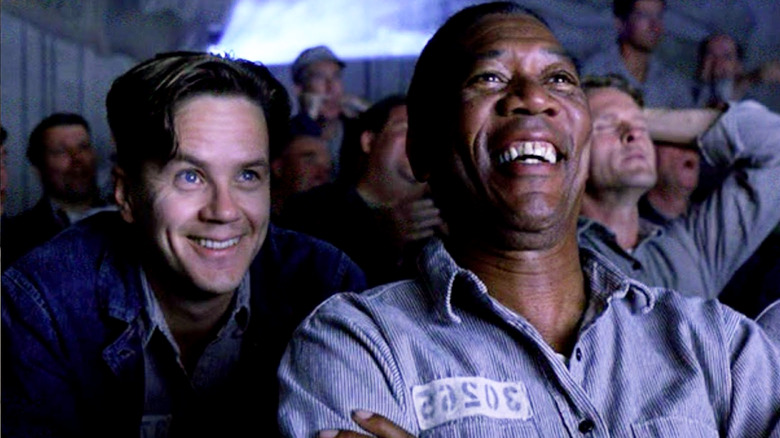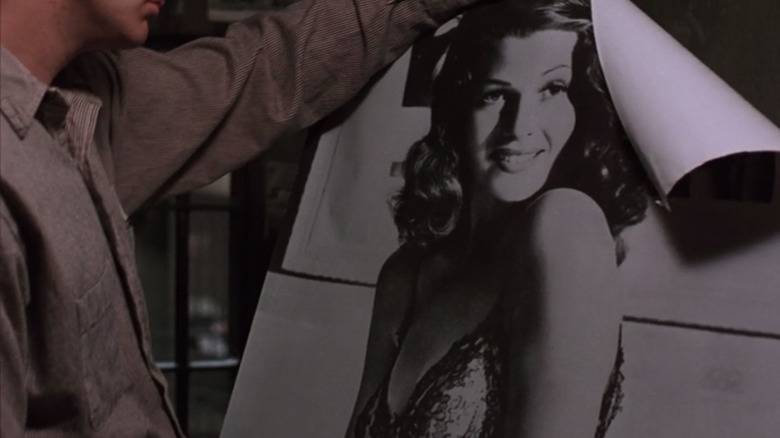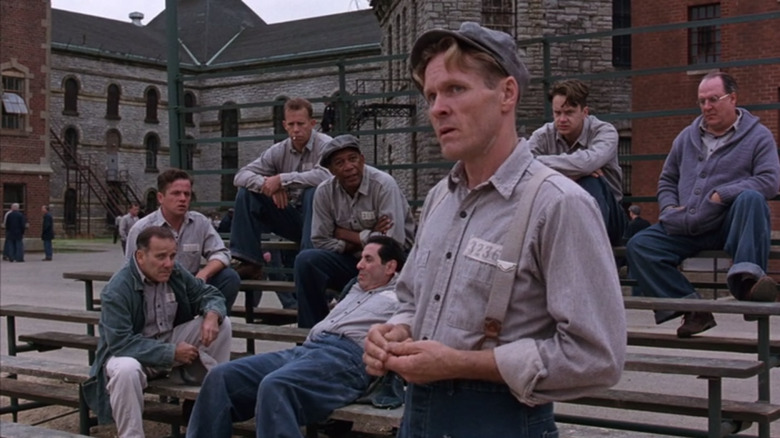Why The Original Shawshank Redemption Title Was Scrapped
"The Shawshank Redemption" is as near-perfect a movie as you'll ever find. The narrative is one of hope, juxtaposed in a crumbling, lifeless prison that acts as an inanimate antagonist. Incomparable cinematographer Roger Deakins creates beautiful imagery in a place where none should exist. The film is the epitome of a modern-day classic.
The movie was nominated for seven Academy Awards and is generally considered to be one of the most beloved and life-affirming movies ever made. Naturally, some viewers are surprised to discover the author of the source material is noted horror writer Stephen King. Until 1994, when "The Shawshank Redemption" was released, almost every King adaptation was in the horror genre, save for 1986's "Stand by Me." Like a good Stephen King story, another surprise about the film lurks around the corner. The film's original title wasn't "The Shawshank Redemption." Of course, King's constant readers probably knew that.
What's in a Name?
The film is an adaptation of the King novella "Rita Hayworth and Shawshank Redemption," which appeared in the 1982 collection "Different Seasons." While a title featuring a top star from Hollywood's Classical era might seem advantageous, director Frank Darabont disagreed. As ScreenRant explains, once the film was announced Darabont began receiving audition requests from supermodels and actresses looking for the lead role.
The title was shortened to leave out Hayworth's name so people didn't confuse the film with a Rita Hayworth biopic. Even with the shortened title, there was still some obfuscation. Tim Robbins, who plays Andy Dufresne, told EW that he blamed the title for the poor box office performance. Robbins said:
"Well, it's the title, no one can remember the title. And that makes sense too, because, for years after that film came out, people would come up to me and say, 'You know, I really liked you in that film Scrimshaw Reduction' or 'Shimmy, Shimmy, Shake' or 'Shankshaw'"
As noted in this Yahoo! article, the titling process for a film can take years. "The Shawshank Redemption" certainly isn't the first film to undergo a title change. In 2013, Complex released a list of the top 25 classic films to undergo a title change. The list includes early titles such as Everybody Comes to Rick's ("Casablanca"), Wimpy ("Psycho"), and How the Solar System Was Won (2001: A Space Odyssey").
Even though it is not uncommon for a film to change titles before its official release, something is jarring about thinking of a classic film by any other name. To even the most devoted Stephen King fan, it might seem odd to now think of "The Shawshank Redemption" by any other name, even its official novella designation.
More Surprises About the Film
The title change isn't the only fascinating tidbit about "The Shawshank Redemption." The story behind the film has as many twists and turns as a King novel. For instance, King never made a dime off selling the rights to the film. Even though Darabont cut a check for $5,000, King not only kept the check but later framed it and mailed it to Darabont with a note that read, "In case you ever need bail money. Love, Steve." Darabont would go on to direct additional King adaptations with "The Green Mile" and "The Mist."
Although omitted from the title, Hayworth does appear in the film a couple of times. The movie that the prisoners watch in the Shawshank prison theater is 1946's "Gilda" starring Hayworth. She also appears in a poster on the wall of Andy's prison cell.
Although Shawshank itself is fictional, much of the production was filmed at an actual prison: the Ohio State Reformatory in Mansfield, Ohio. The prison operated from 1896 to 1990, when it was permanently closed. Today you visit the prison, take a guided tour, and learn more about the making of the film.
Three of the four novellas from "Different Seasons" have been made into films. In addition to "The Shawshank Redemption," "The Body" was adapted into the 1986 movie "Stand by Me" and "Apt Pupil" was made into a film of the same name in 1998. The fourth story, "The Breathing Method," has been in various stages of development over the years.


